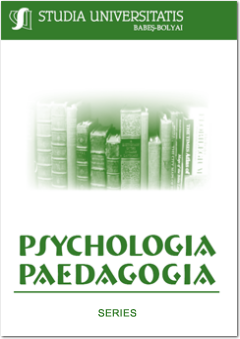HOW SOCIO-EDUCATIONAL WORKERS WITH AT-RISK YOUTH ATTAIN ATTACHMENT CAPACITY AND SELF-EFFICACY: TWO RECENT FINDINGS
HOW SOCIO-EDUCATIONAL WORKERS WITH AT-RISK YOUTH ATTAIN ATTACHMENT CAPACITY AND SELF-EFFICACY: TWO RECENT FINDINGS
Author(s): Levi-Sudai Pazit, Doina BalahurSubject(s): Educational Psychology, Behaviorism
Published by: Studia Universitatis Babes-Bolyai
Keywords: at-risk youth; attachment; perceived self-efficacy; socio-educational work;
Summary/Abstract: Background: Although attachment theory and efficacy theory are well-developed the determinants of perceived self-efficacy have been much less researched. Aims & research questions: This study measures and explains the association between the attachment style and perceived self-efficacy of Israeli socio-educational workers working with at-risk educational system drop-outs.Methodology: This 2016-19 study of a large national sample deployed a Convergent Parallel Mixed Methods design. This first paper offers two findings from a semi-structured qualitative interview. Findings: (1) An important proportion of workers come to the job pre-equipped and pre-committed for it by their upbringing and life since early childhood. (2) Almost all will significantly grow their PSE on the job. Discussion: PSE develops throughout the lifespan. Noddings’ ‘pedagogy of care’ helps explain many workers’ heartfelt sense of mission.Conclusions: PSE will not grow successfully on the job unless the working environment is made a ‘safe haven’ and ‘secure base’ for the workers.
Journal: Studia Universitatis Babes-Bolyai - Psychologia-Paedagogia
- Issue Year: 64/2019
- Issue No: 2
- Page Range: 111-126
- Page Count: 16
- Language: English

